For this report, we’ll be sharing our experience growing California Haze Feminized. This sativa-dominant strain was developed in collaboration with the team at Humbolt Seed Company and we were thoroughly impressed. This plant was an absolute beast and wrangling it was an ongoing challenge but the results were worth the effort.
Total growing time: 95 days
Flowering time: 65 days
Final height: 143 cm
Final yield: 158 grams
THC content: 20.47%
For this grow, we used a 12-litre plastic pot filled with BAC Lava Mix and topped with a thin layer of Rockwool cubes. Hanging three metres above the pot, we had a 1000 W Phillips GreenPower HPS light which helped us to maintain a regular daytime temperature of 23°C; this dropped to 21°C at night. During vegetation, we kept the grow space at a relative humidity of 65% and lowered it as the plant matured.
Germination & seedling
Before our plant could grow, we first needed to germinate the seed. To do this, we used the industry-standard Paper Towel Method since it’s easily the fastest and most reliable technique out there. We simply folded up a paper towel and poured about 30 millilitres of water onto it until it was thoroughly damp but not dripping wet. Next, we placed our seed on top and covered it with another damp paper towel before putting all of this into a plastic bag and setting it somewhere warm for a day or two.
After a little more than a day, our seed had split open showing off the thin white taproot. We took our seed and planted it with the taproot pointing down into a Rockwool cube and set it under a 600 W lamp. This early on, too much light, heat, or water can prevent a seed from successfully rooting so we left it alone for a few days. On the third day, we fed our seedling for the first time with 100 ml of pH-balanced water (pH 6.2; EC 0.8) mixed with a small dose of rooting hormone.
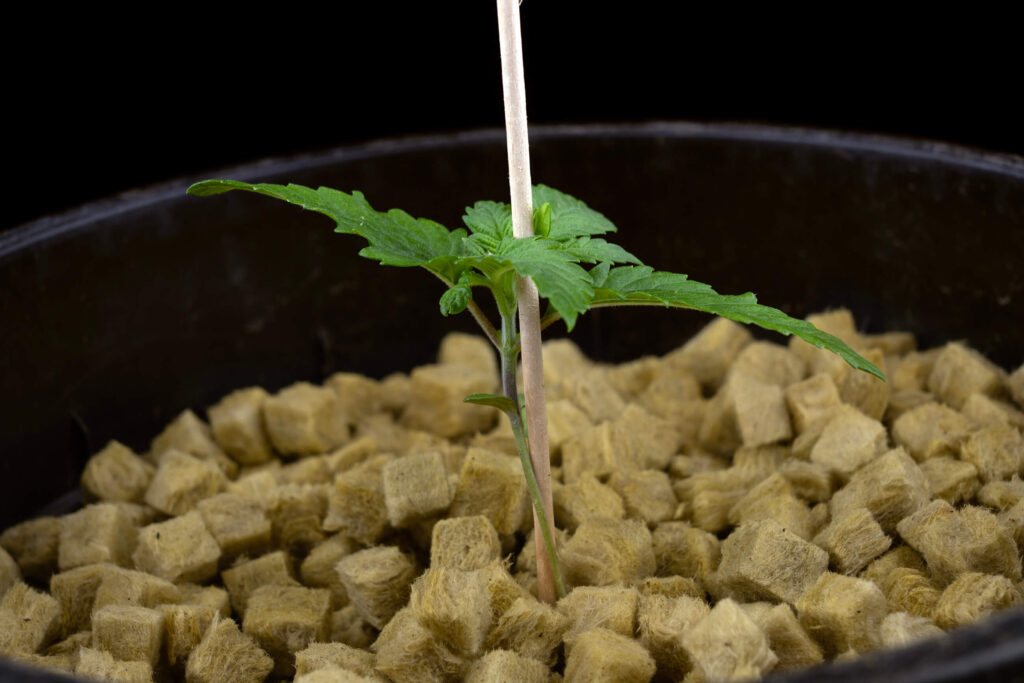
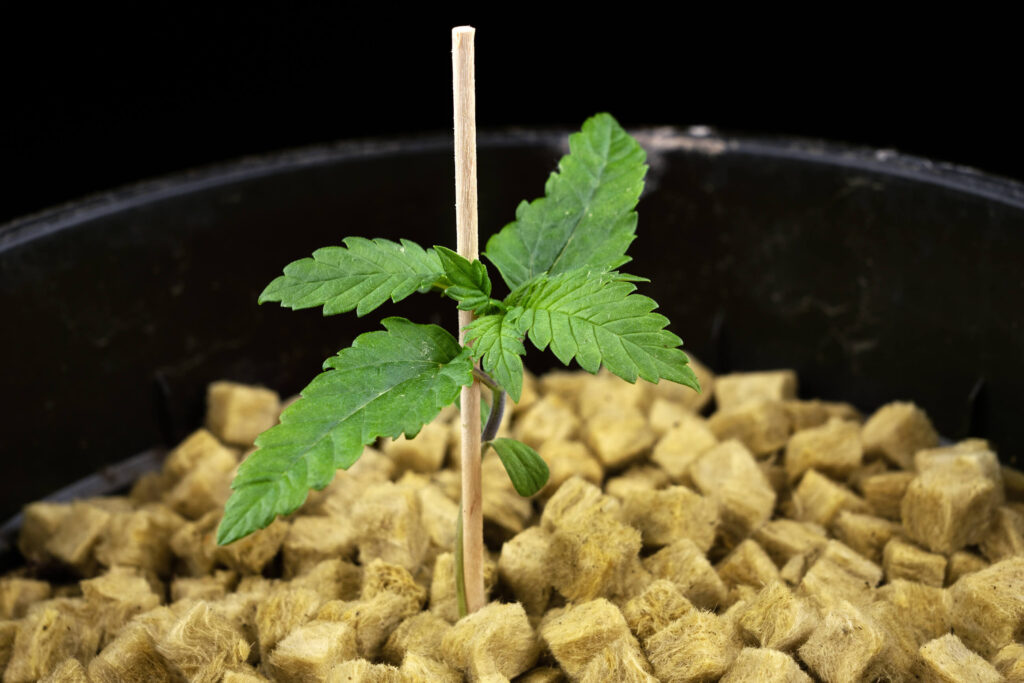
After one week, our California Haze plant had fully sprouted and was 8 cm tall with a full set of leaves. At this point, we started feeding our plant every day with 100 ml of water (pH 6.0; EC 1.4) mixed with Bio Grow liquid nutrients. By the end of the week, our plant’s roots were growing out of the bottom of the Rockwool cube and we moved it to our 12-litre plastic pot underneath our 1000 W lamp.
Vegetation
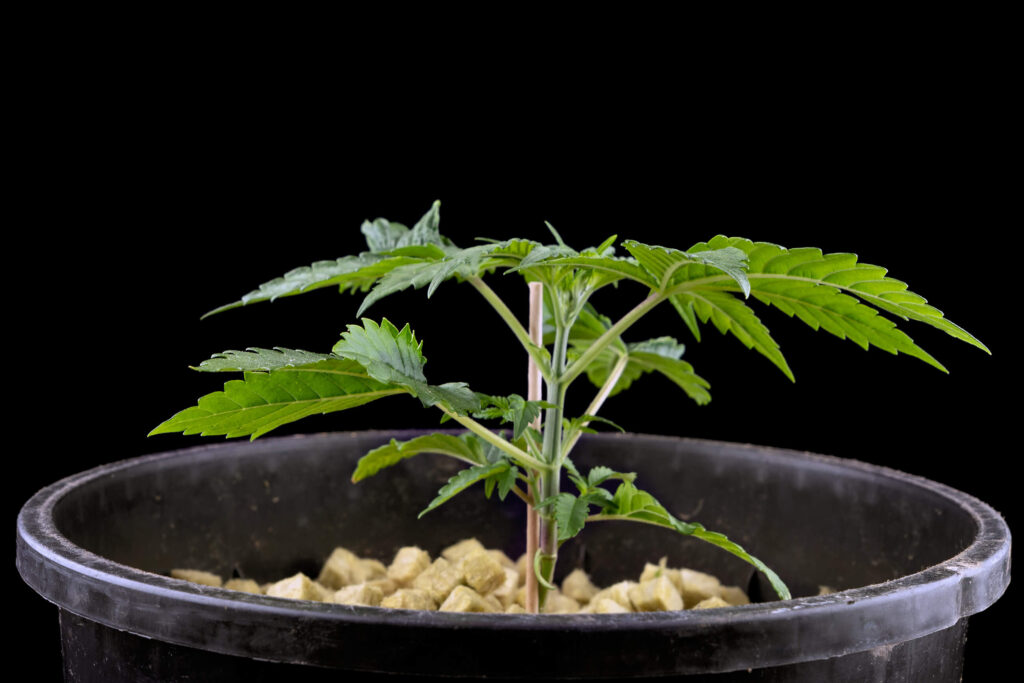
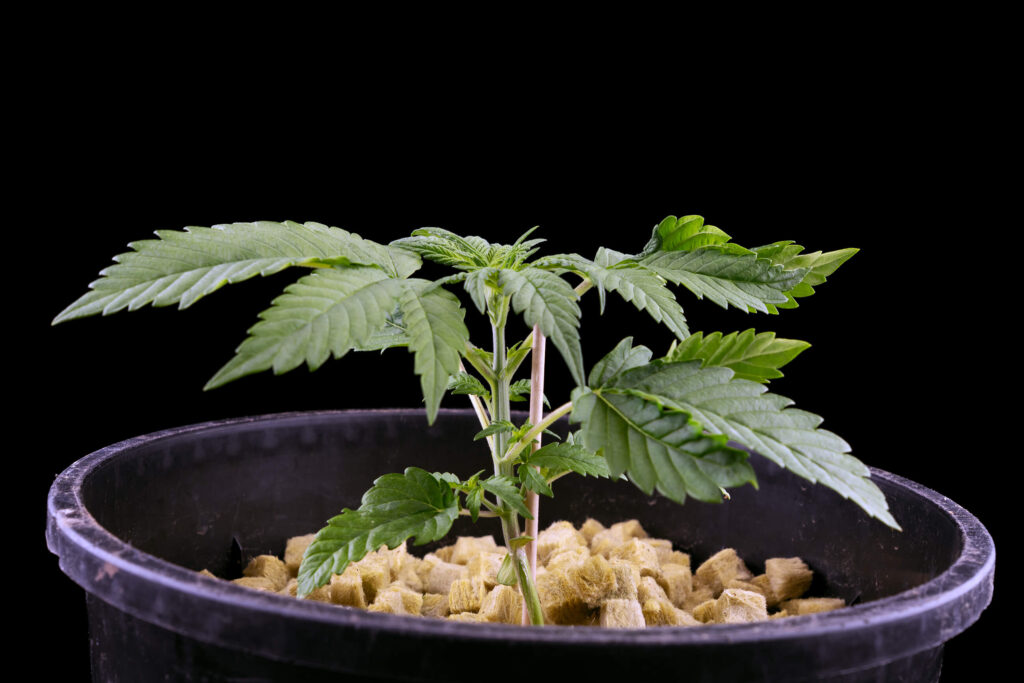
In week two, our plant only grew slightly to 12 cm and developed a few new sets of leaves which were slightly small and fairly spaced out. The first lateral branches were already appearing and the plant was the picture of health. The help it stay that way, we upped our daily feedings to 200 ml of water.
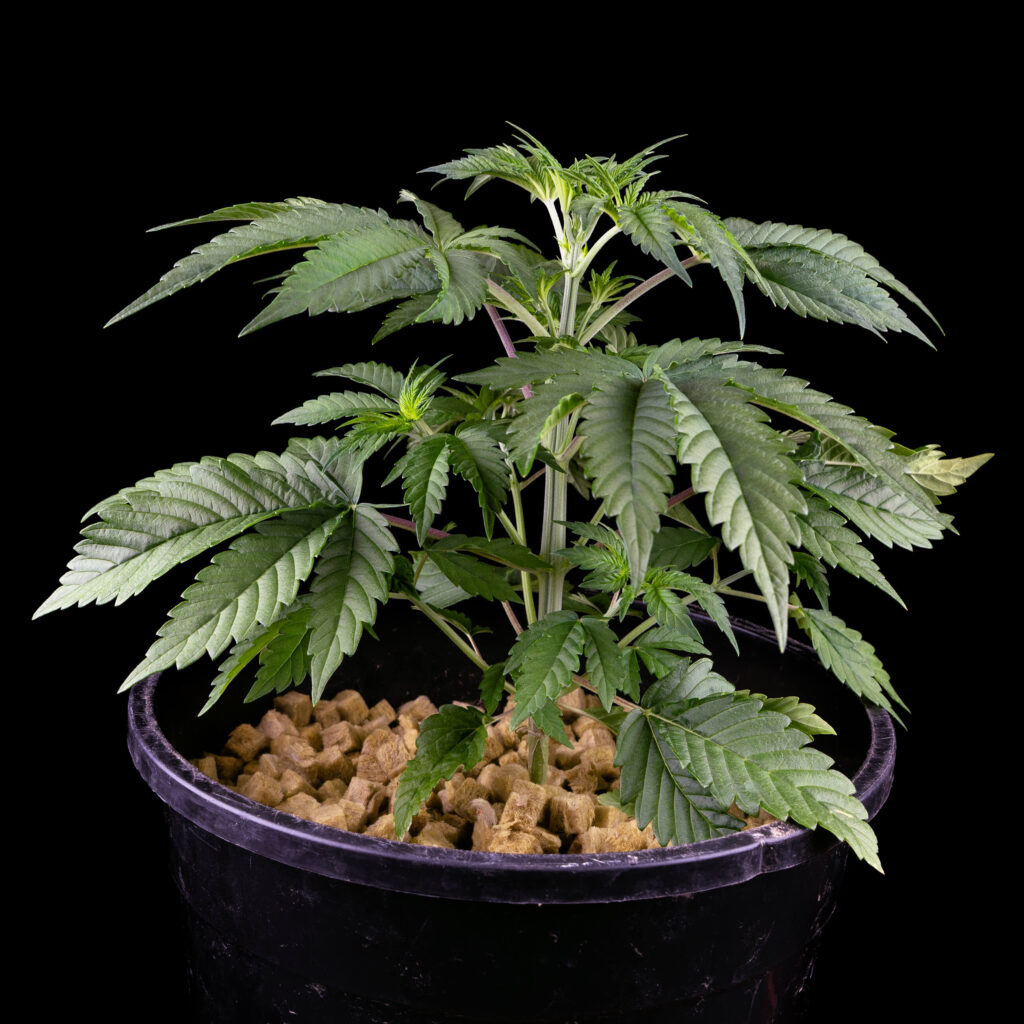
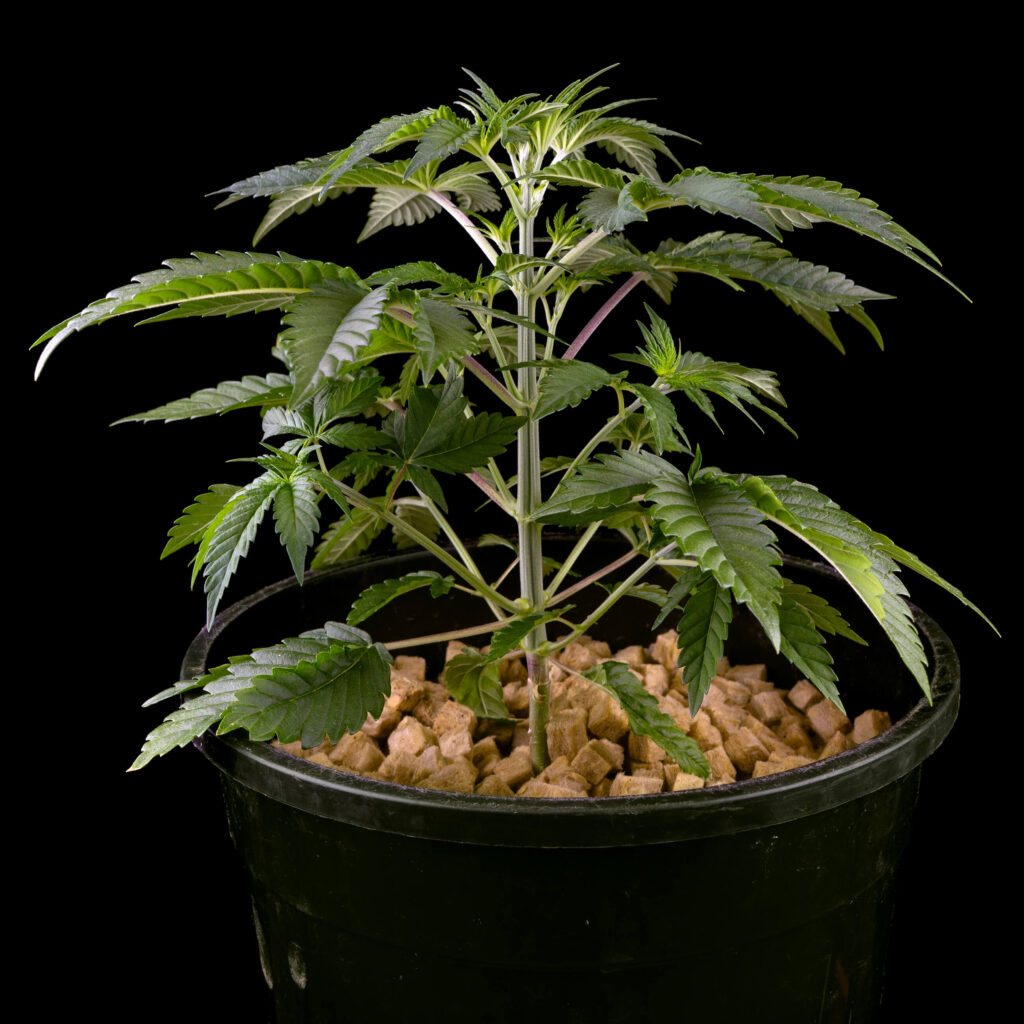
Week three was when our plant started to really take off as it grew to 22 cm, grew several new sets of leaves, and saw rapid growth of the lateral branches. The shape of this plant was absolutely perfect with completely uniform internodal spacing, equally-sized leaves, and lateral branches growing at a perfect 45° angle. Next week we’d switch to flowering, so we again upped the volume of water to 400 ml each day.
Before we could switch to flowering, though, there was one last thing to do. We hung small white pouches from the plant’s lowest branches. These contained Neoseiulus californicus and Amblyseius swirskii; tiny creatures which live symbiotically with cannabis plants. These things won’t cause any harm to our California Haze while they hunt down pests like spider mites and thrips which can destroy even the healthiest of plants. These are replaced every four weeks to maintain a fresh supply.
Flowering
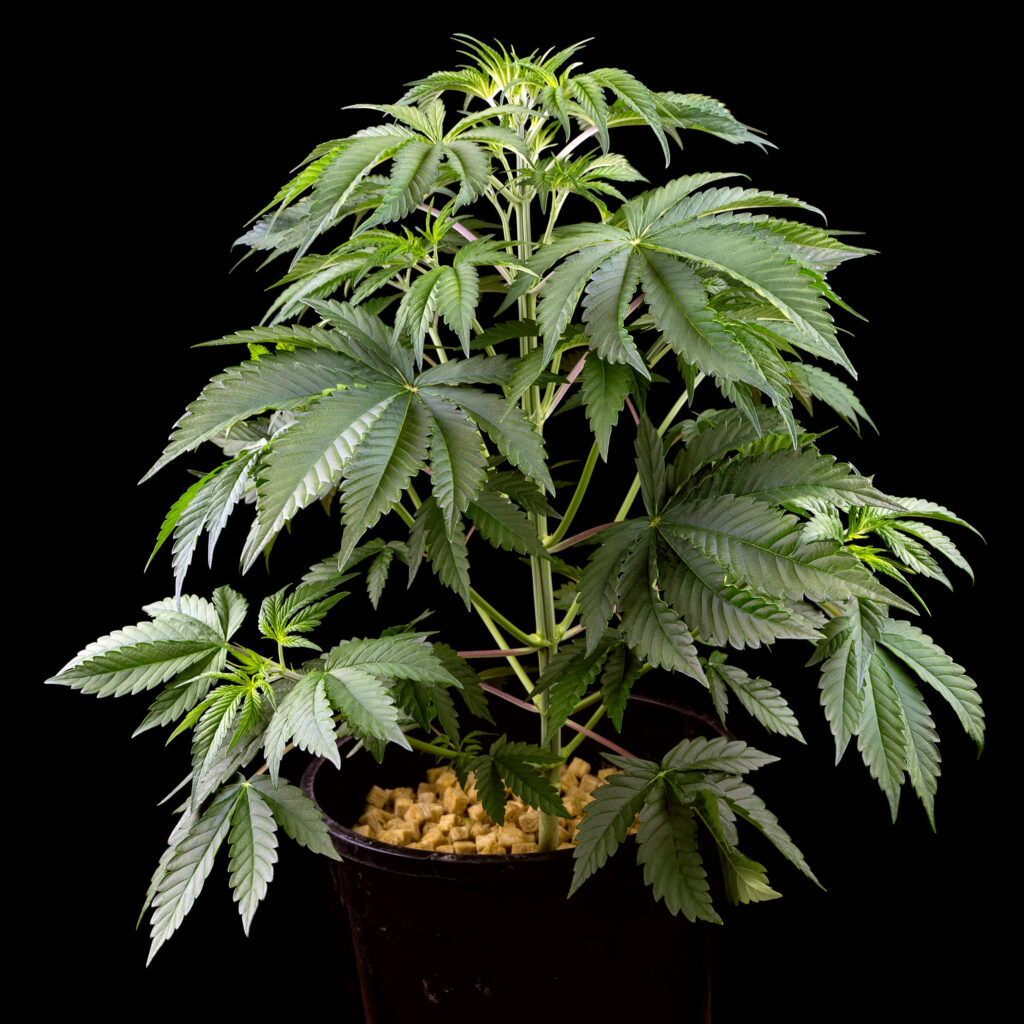
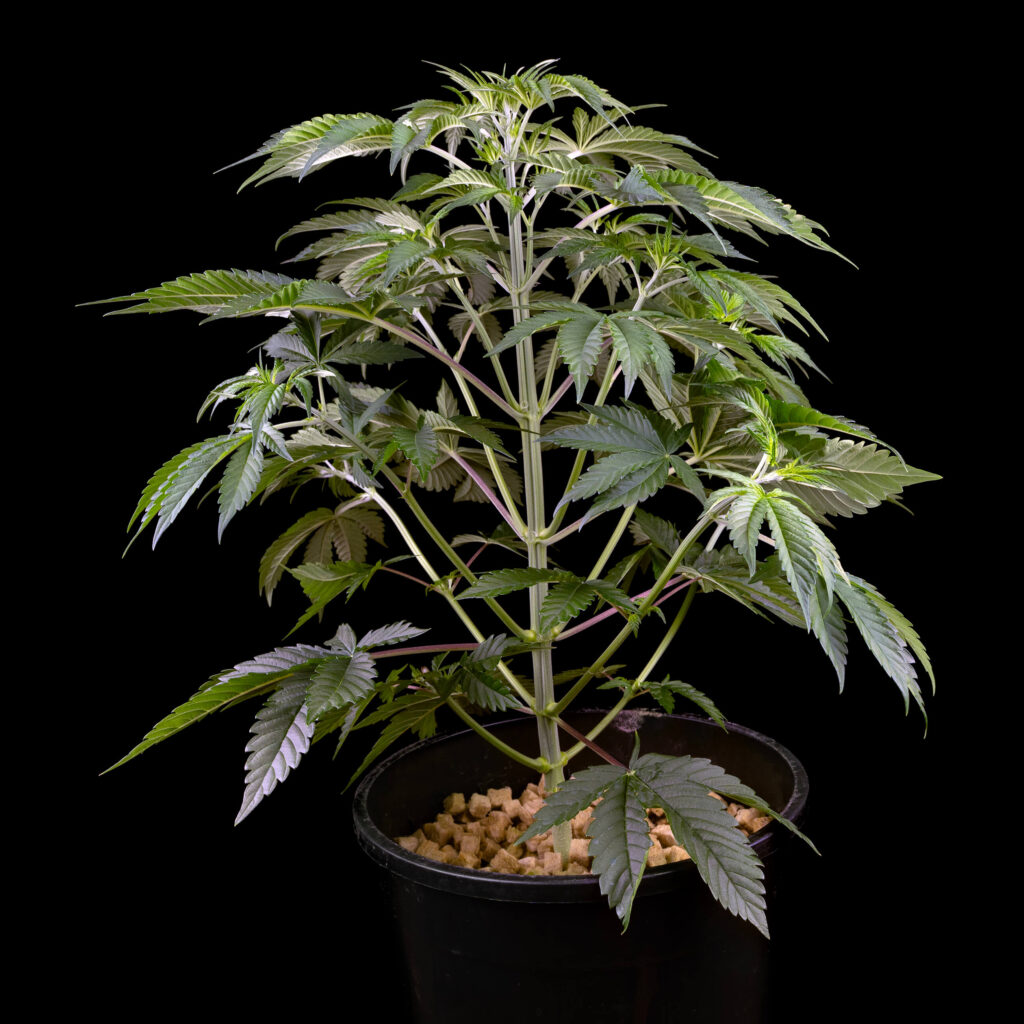
In week four, our plant continued its rapid growth doubling in height to 44 cm. Despite doubling in height, the plant kept the same proportions and stretched out fairly evenly from top to bottom. This was the week when we flipped to flowering and that’s always a breeze. We started by changing our lights to a 12-hours-on-12-hours-off schedule and changed our watering habits. Now, we would be using Bio Grow liquid nutrients mixed with 800 ml of water (pH 6.0; EC 1.8). Lastly, we lowered the humidity to 60% to help prevent mould.
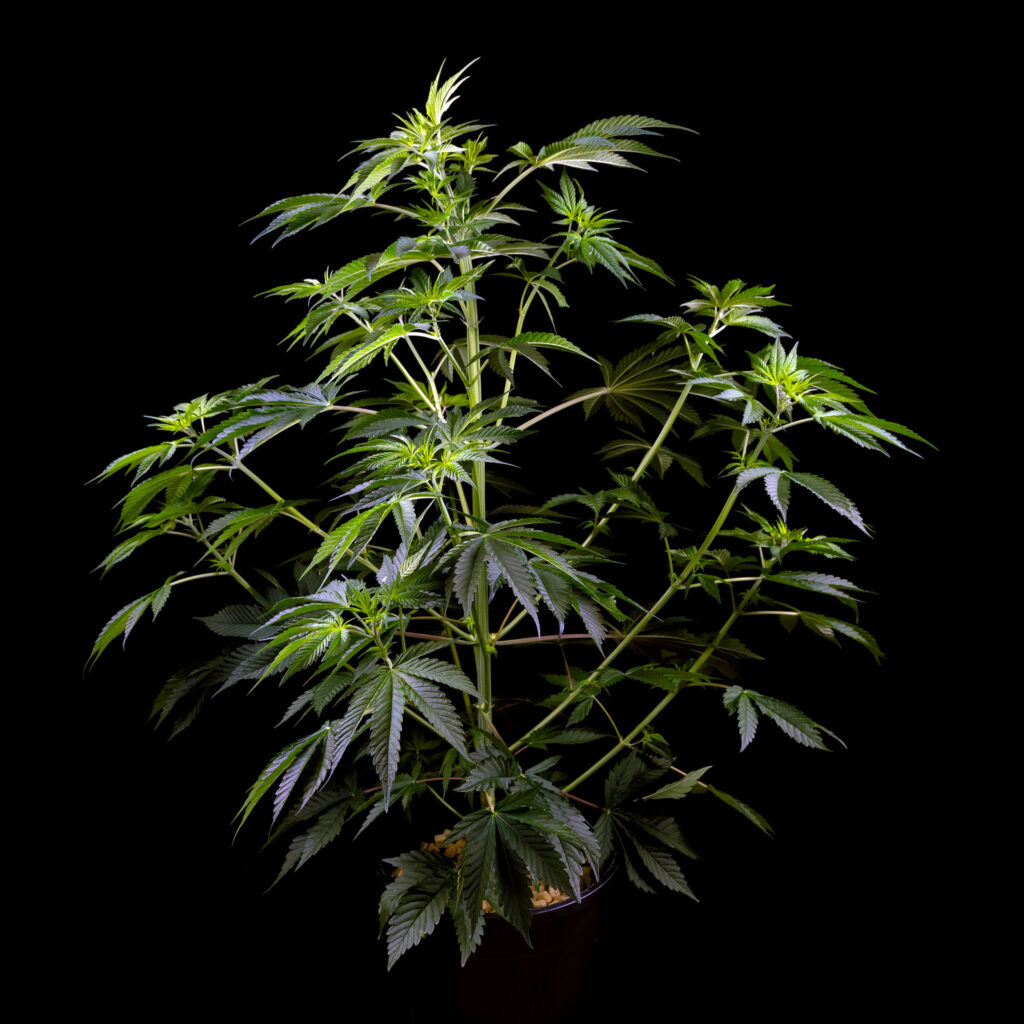
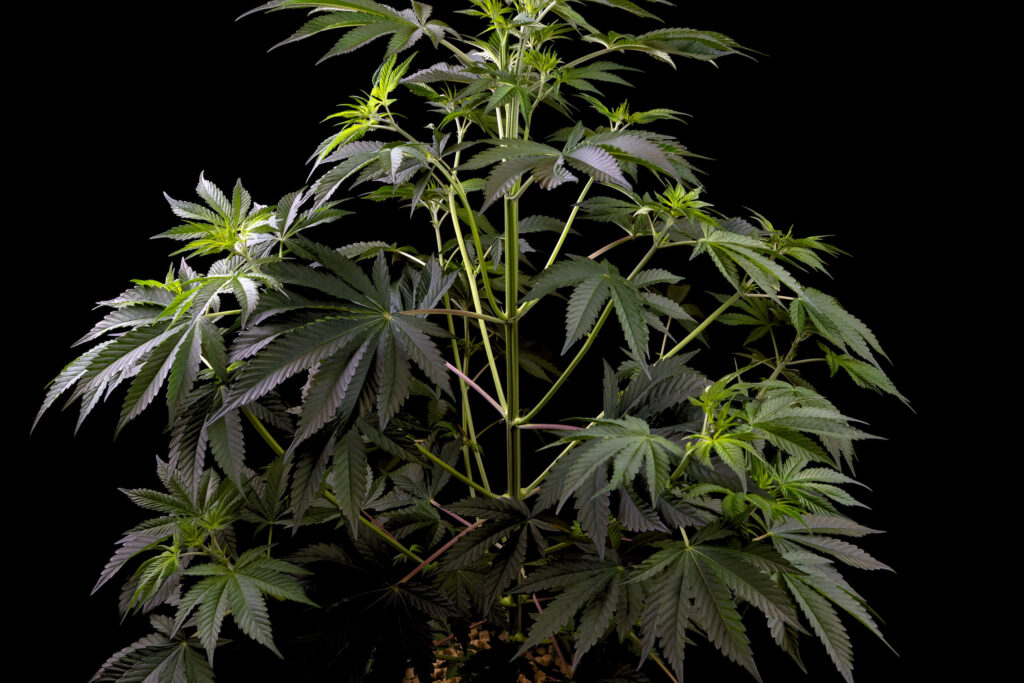
Week five saw our plant’s first major growth spurt as it gained 28 cm to reach a new height of 72 cm. The lower branches saw equally impressive growth and were all roughly the same length creating a near-perfect Christmas tree shape. The plant looked slightly barren with so much space between leaves but it was in great shape. We expected flowering to start next week, so we increased daily feedings to 1000 ml.
In week six, our plant had its largest bout of growth skyrocketing up another 32 cm to hit 104 cm tall. All of the branches were very slender and we were somewhat concerned about how well they would be able to support the buds that were just starting to grow. By the end of the week, every flowering site was showing a handful of small white pistils and we increased daily feedings to 1500 ml.
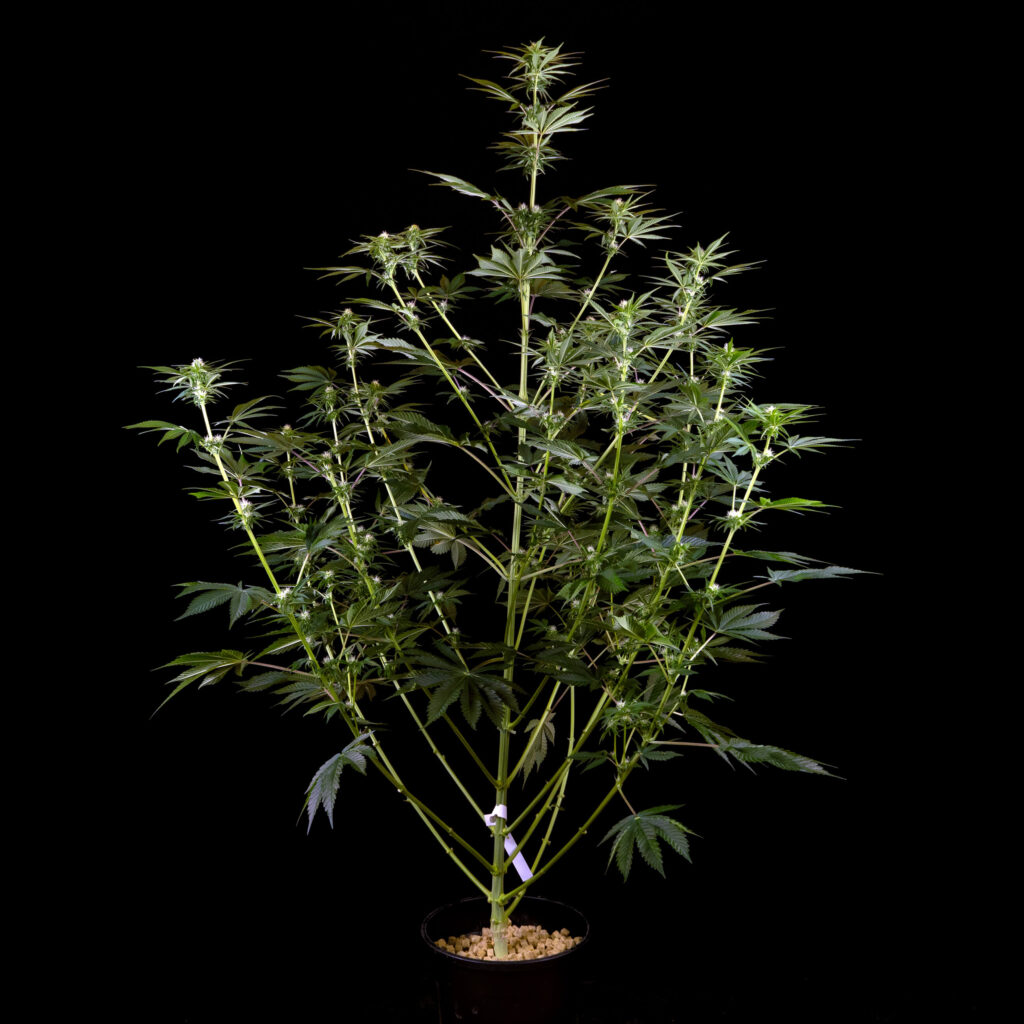
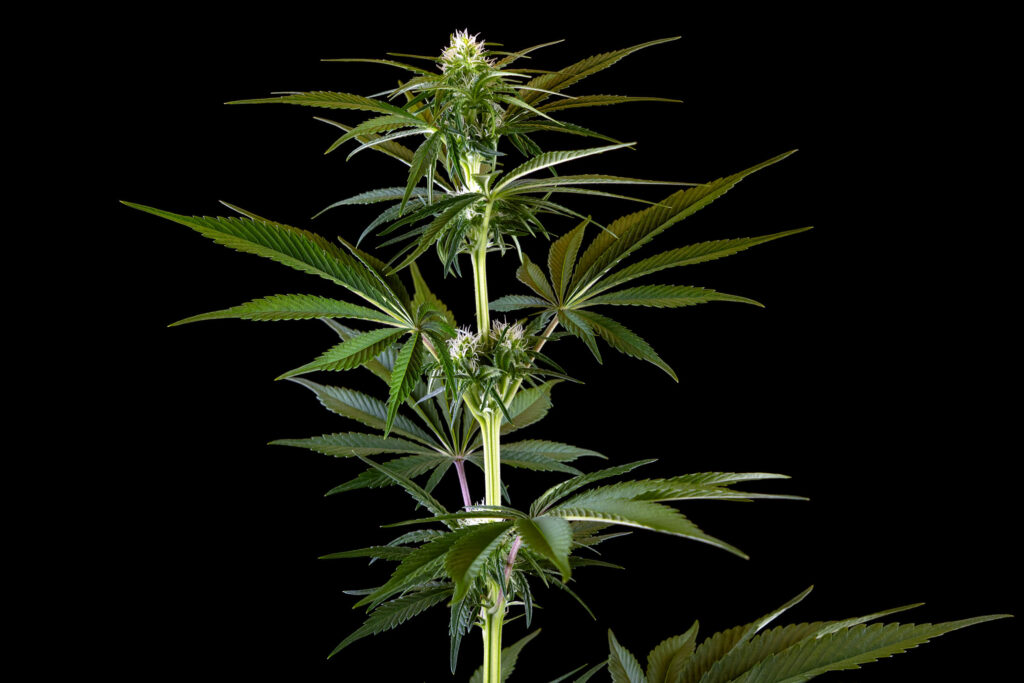
Week seven gave our plant its last round of explosive growth as it reached a height of 130 cm. The plant had a very poorly defined canopy, but the sparse vegetation meant that every flowering site was getting adequate light and airflow. The buds were developing rapidly and were set to take off any day now.
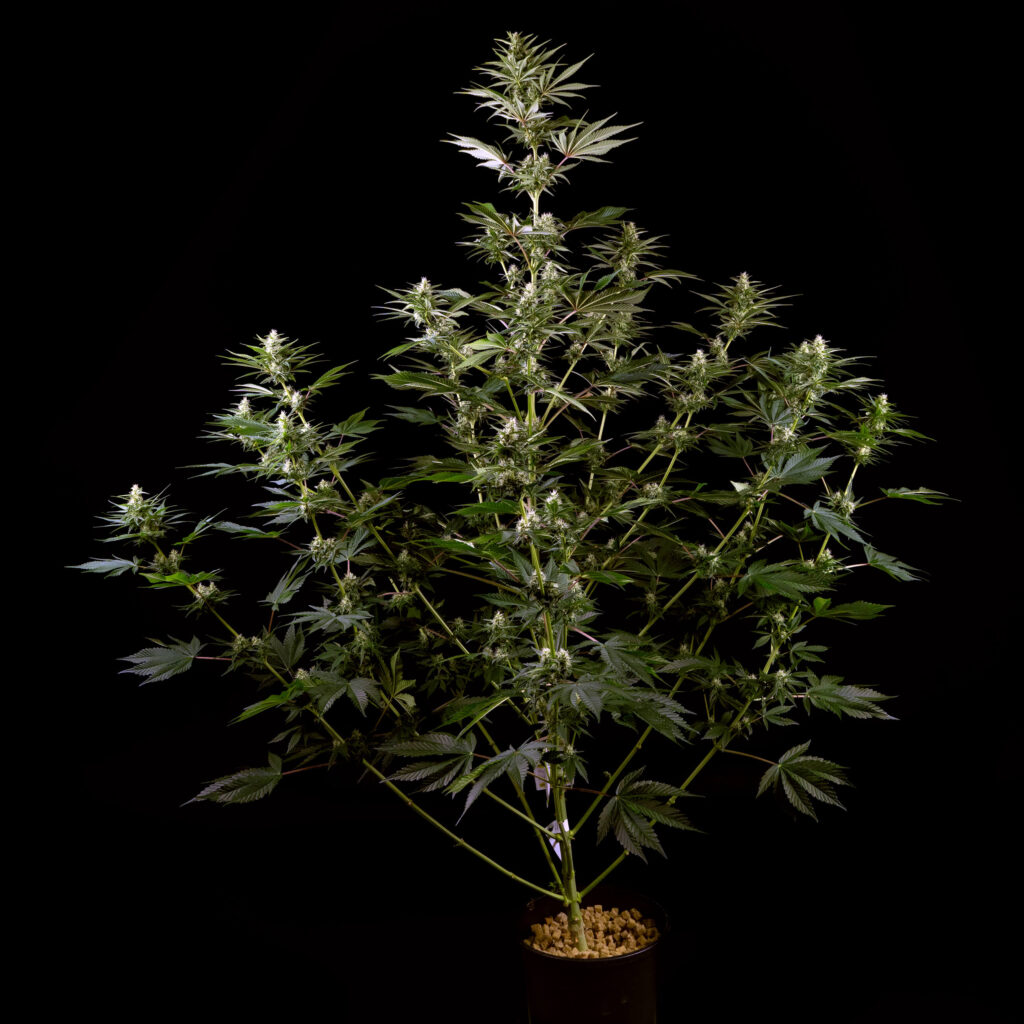
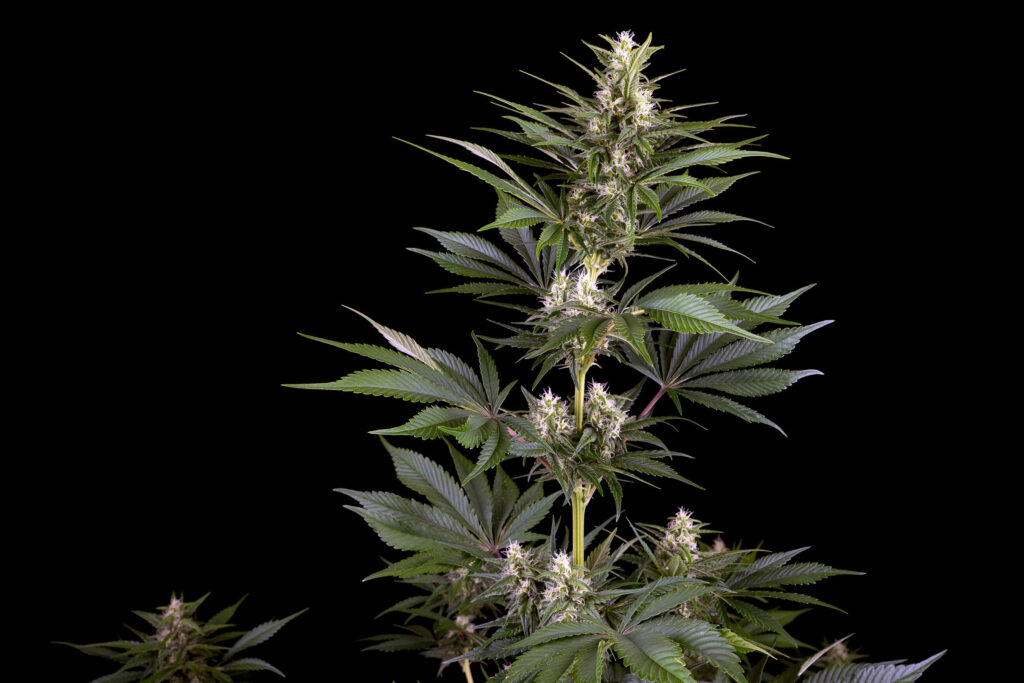
In week eight, our plant finally started to slow down its vertical growth as it hit a new height of 135 cm. Flower production was in full swing and every flowering site was developing robust, compact buds. The main stem was fairly warped at this point which isn’t uncommon for plants that are this slender but it could be an issue if left unattended.
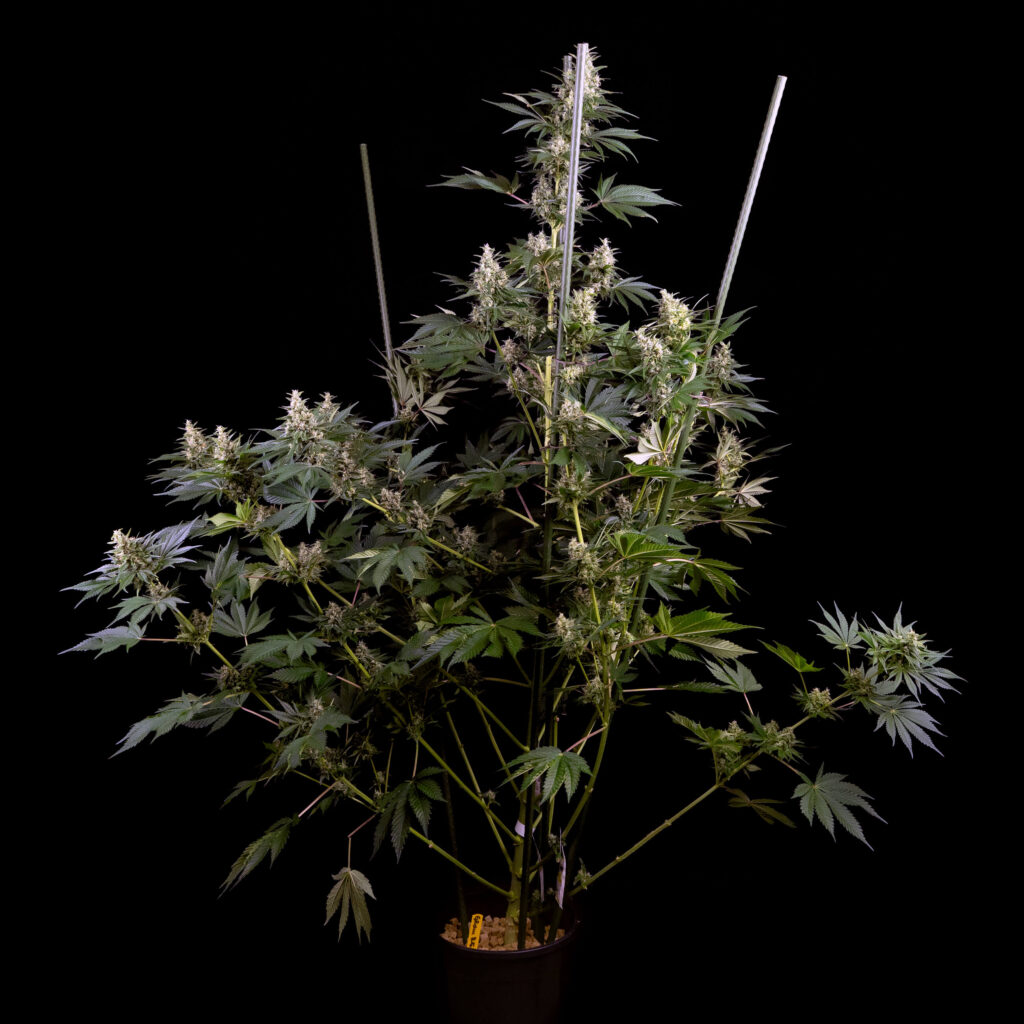
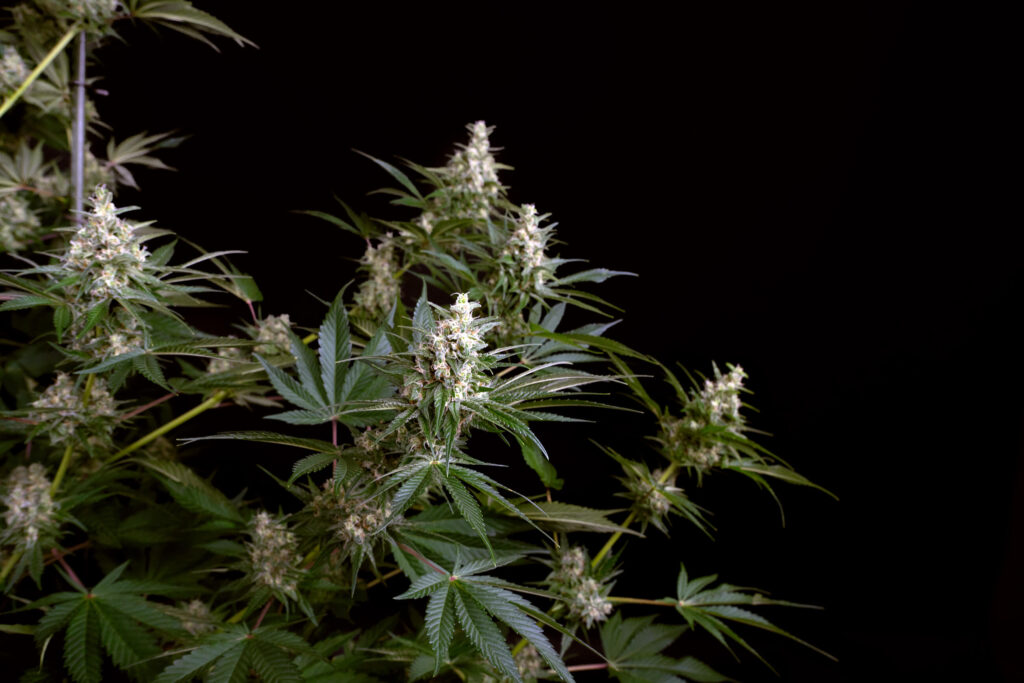
Over weeks nine and ten, our plant finally topped out at 142 cm tall and we needed to add several support rods to keep the branches from collapsing under their weight. The buds were conical, large, and dense and were beginning to give off a mild—but noticeable—scent.
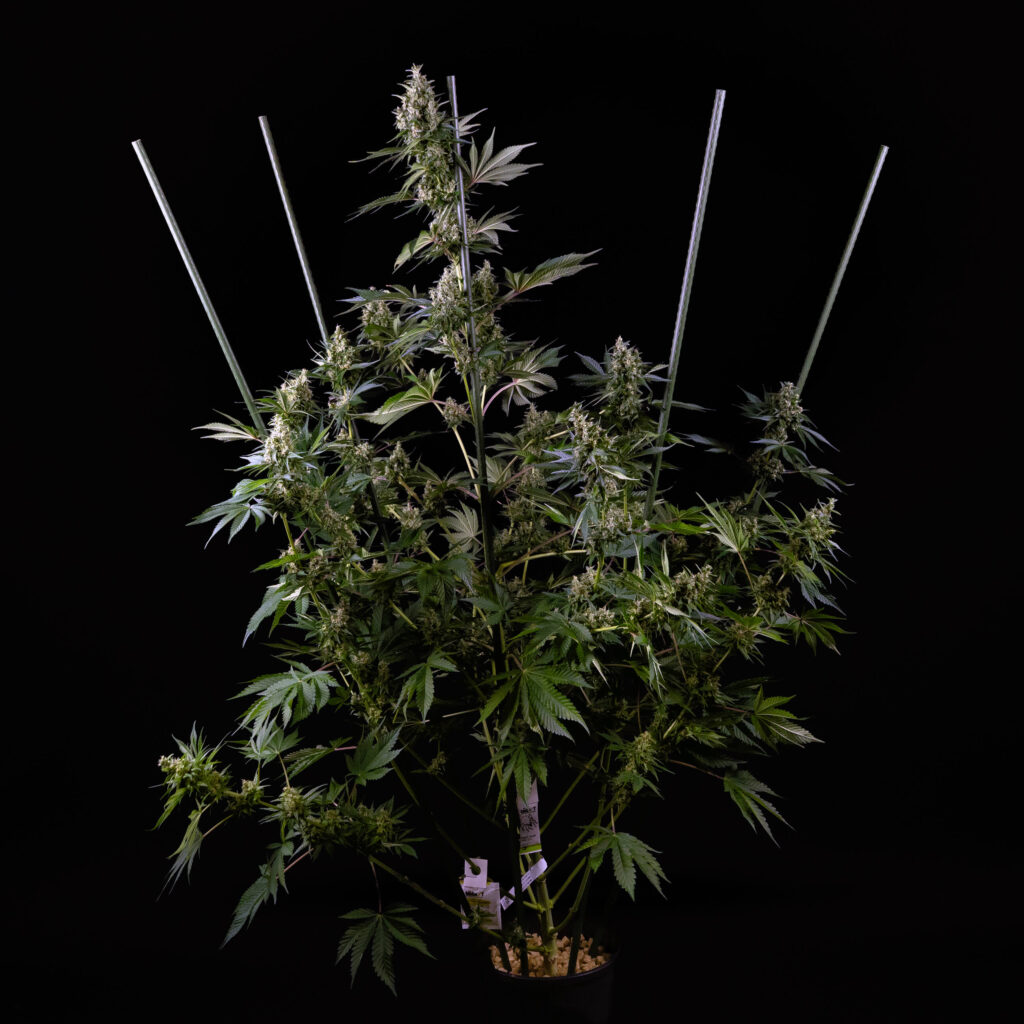
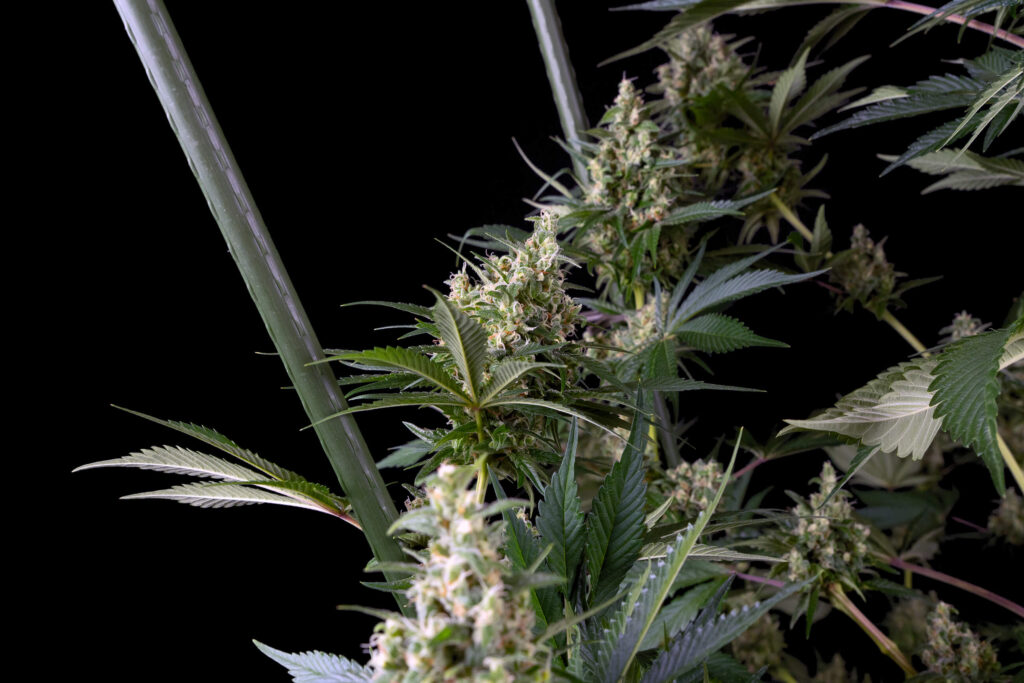
Week eleven saw our plant gradually start winding down as the first orange pistils began to appear. The flowers were still growing slightly denser each day and at this point, it was simply a waiting game.
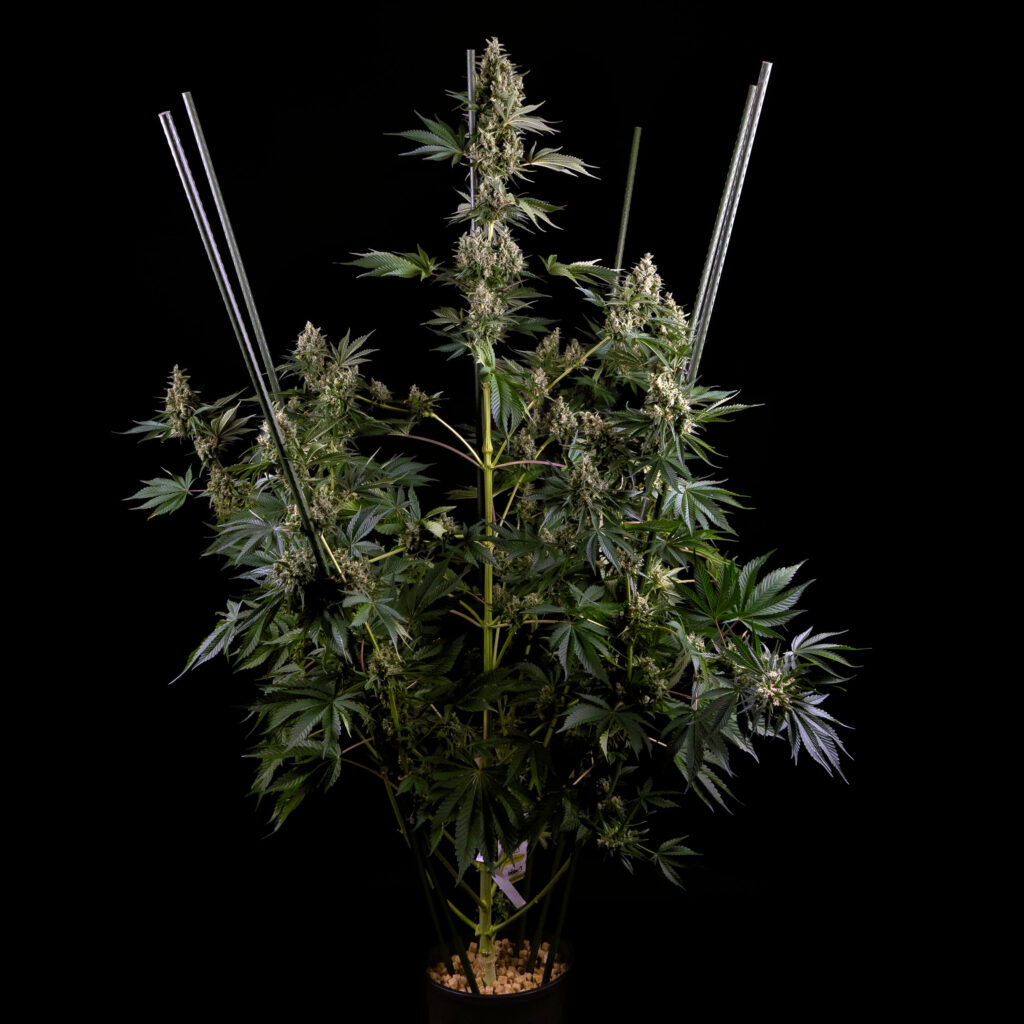
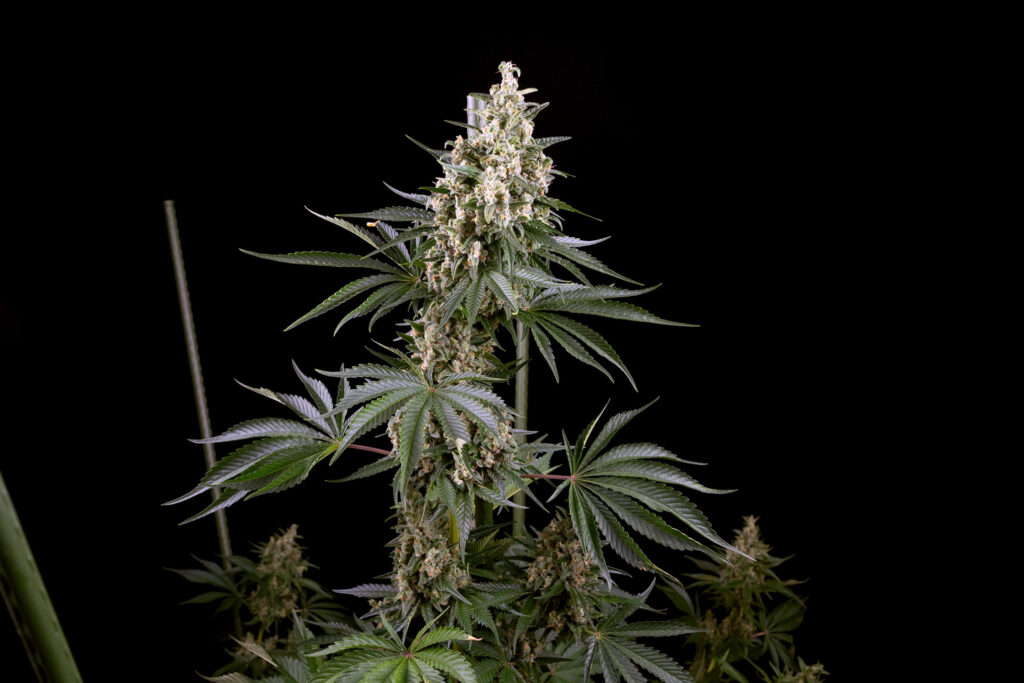
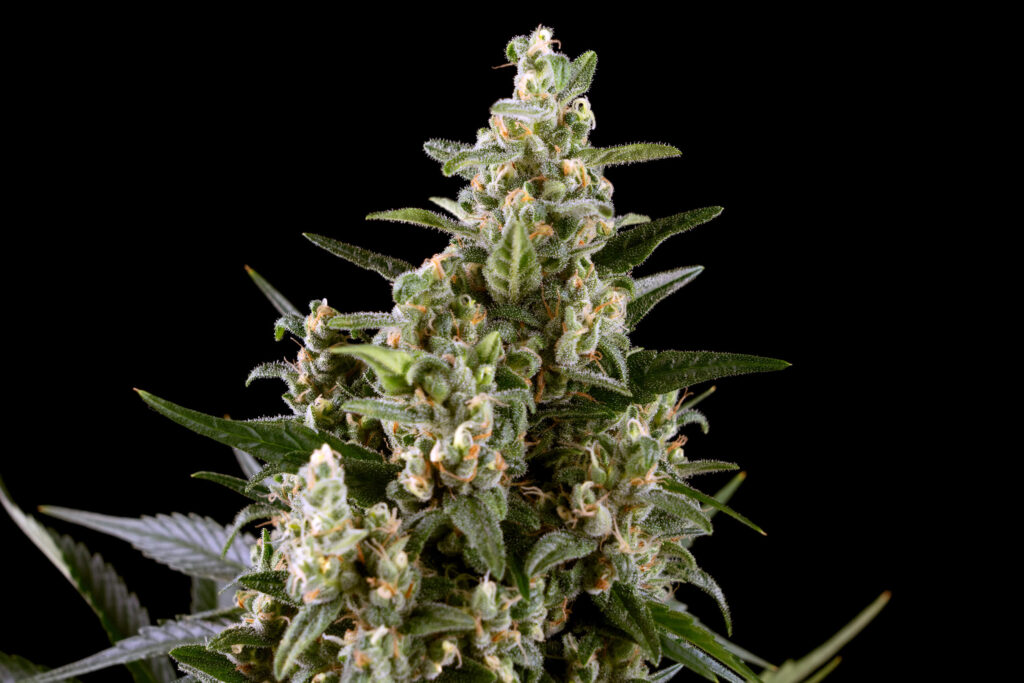
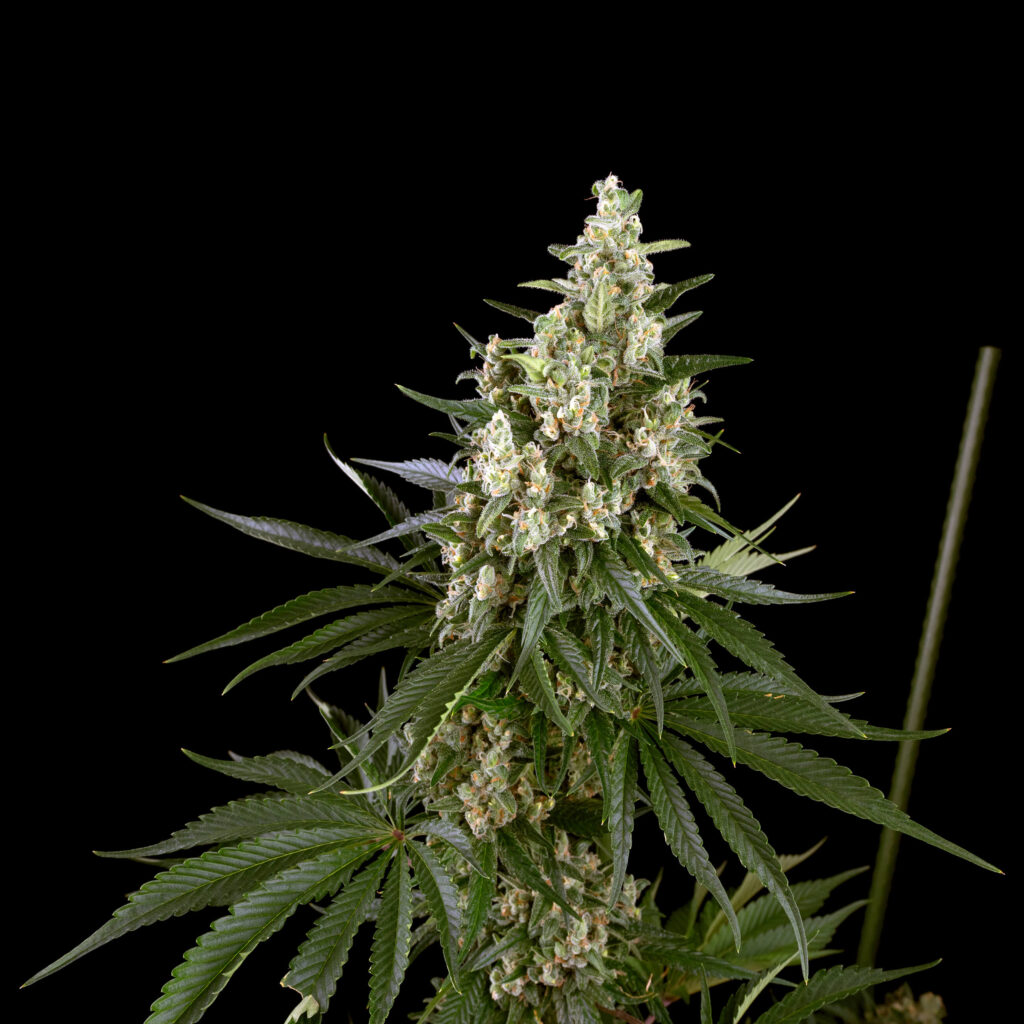
In week twelve, our plant continued to ripen as the buds gradually stopped growing any larger or denser and more and more pistils turned a vibrant orange. Additionally, the trichomes were quickly shifting from milky white to amber and it was very nearly time to harvest.
In week fourteen, we harvested our California Haze plant.
Harvest
To harvest our California Haze Feminized cannabis plant, we started by cutting it down at the base and stripping off all of the plant’s fan leaves. Once it was ready, we hung it upside-down in a climate-controlled room with a stable temperature of 15.5°C and a relative humidity of 50% until the smallest branches snapped when bent. On average, this takes anywhere from 10-20 days depending on the size of the plant.
Once dried, we needed to prepare the buds for curing by removing them from the branches and trimming away any remaining leaves. The buds were massive, sticky, and rather leafy which all combined to make trimming a bit of a hassle. Once done, we placed the buds into glass jars for curing.
For the first 26 hours, we left these jars open to allow as much moisture to escape as possible before sealing them and setting them somewhere cool and dark. We regularly “burped” these jars several times per day for an hour each and gradually reduced the frequency to only once a day. Eventually, the buds reached the perfect consistency. On average, the curing process takes 4-6 weeks and cannot be skipped or rushed.
Once finished, we were able to harvest a very impressive 158 grams of dried flower with a very decent THC content of 20.47%.
Terpene profile
About halfway through growing, we began to notice a mild floral scent coming from our plant. As harvest approached the smell intensified and brought in notes of freshly-peeled oranges and pine. The smell was certainly noticeable but not overwhelming. Once cured, the buds retained this same aroma but turned the strength up several notches.
When consumed, the flavour is largely what you’d expect based on the scent; zesty lemon, fresh earth, sweet blossoms, and aromatic hints of sandalwood all combine to create a truly mouthwatering experience.
As for the effects, they’re largely what you’d expect from a strain with such a strong sativa lineage. Expect a long-lasting and euphoric cerebral high that’s sure to boost your mood and enhance creativity and concentration. If you’ve got to get some stuff done, this strain is a wonderful choice.
The outcome
Many indoor growers struggle with the size of sativas and California Haze Feminized isn’t going to change that. The strain’s above-average height and long, slender branches make it a real space invader both vertically and horizontally but it uses that space incredibly well. If you’ve got a little extra room to work with and don’t mind wrangling a few runaway branches, this strain is a great choice; particularly if you’re using scrogging or mainlining.
- Disclaimer:Laws and regulations regarding cannabis cultivation differ from country to country. Sensi Seeds therefore strongly advises you to check your local laws and regulations. Do not act in conflict with the law.







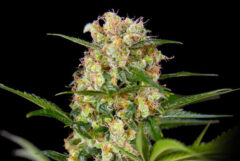
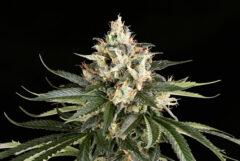
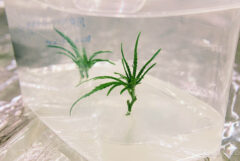

Hallo lezer, ik heb in mijn buitentuin verschillende soorten waarbij ik gebruik maak van de verduistermethode. Helaas zijn de stokjes met de verschillende soortnamen door elkaar geraakt. Ik heb 2 vragen over de California haze, ten eerste kan het zijn dat ze een heel dicht bladerdak hebben, ik moet ze zeker wel gaan trimmen in week 3 van de bloei en kan het zijn dat het een vroegbloeier is? Ik had een paar planten niet verduisterd en was verrast dat deze in de eerste augustus al bloemvorming vertoonde.